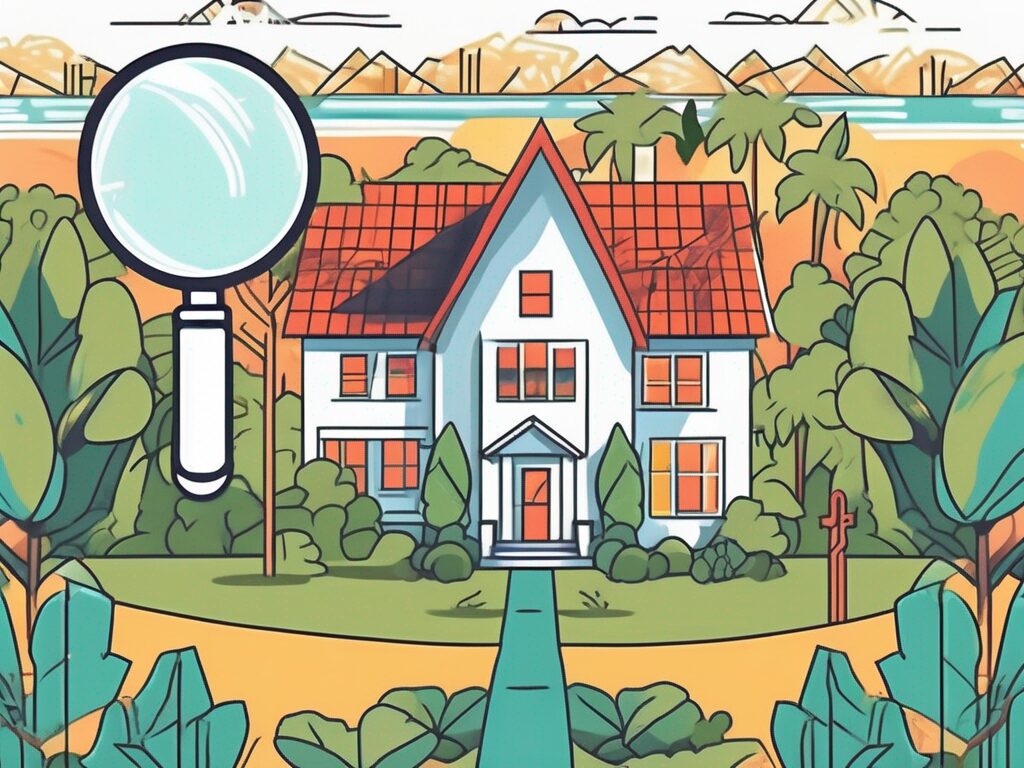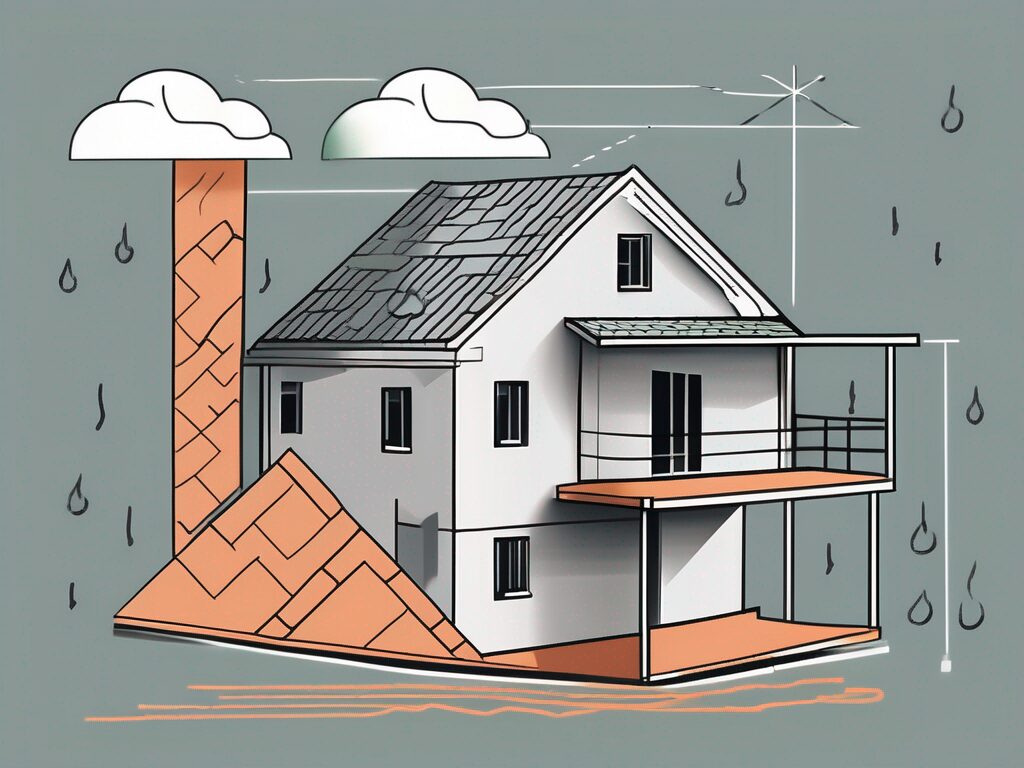
Agent A-Team or Solo Superhero? Finding the Right Real Estate Partner for Your Selling Journey in Wildwood Florida
When it comes to selling your home in Wildwood, Florida,…
January 29, 2024
Buying a house is a significant decision, one that involves careful consideration of various factors. Among these is the presence of unpermitted additions in the property. Unpermitted additions are alterations or expansions made to a home without obtaining the necessary permits from the local authorities. While some buyers may be drawn to the appeal of a property with additional space, it is essential to understand the risks and benefits associated with purchasing a house with unpermitted additions.
Before delving into the risks and benefits, it is important to grasp the concept of unpermitted additions. These additions can range from enclosed patios and converted garages to entire rooms or levels that have been constructed without proper authorization. Homeowners may be motivated by a variety of reasons to undertake unpermitted work, including increased living space or financial constraints.
There are several factors that contribute to homeowners opting for unpermitted additions. These reasons can include financial constraints, lack of knowledge about building codes, desire for additional living space, or a desire to avoid the lengthy and costly permit process. While these motivations may seem reasonable at first, it is essential to weigh the potential consequences of purchasing a house with unpermitted additions.
Financial constraints are a common reason why homeowners choose to undertake unpermitted additions. The cost of obtaining permits and hiring professionals to complete the work can be prohibitive, especially for those on a tight budget. In an effort to save money, homeowners may decide to take matters into their own hands or hire unlicensed contractors who are willing to work without permits.
Lack of knowledge about building codes is another factor that contributes to unpermitted additions. Homeowners may not be aware of the legal requirements and regulations surrounding construction projects. They may mistakenly believe that they can make changes to their property without obtaining the necessary permits, unaware of the potential consequences.
Desire for additional living space is a driving force behind many unpermitted additions. As families grow or lifestyles change, homeowners may find themselves in need of more room. Rather than going through the lengthy process of obtaining permits and waiting for approval, they may choose to add on to their homes without proper authorization.
Avoiding the lengthy and costly permit process is another reason why homeowners opt for unpermitted additions. The process of obtaining permits can be time-consuming and expensive, involving paperwork, inspections, and fees. Homeowners may choose to bypass this process in order to save time and money, not fully considering the potential consequences.
Unpermitted additions come in various forms, and it is crucial to be aware of the common types found in residential properties. Enclosed patios, converted garages, finished basements, additional bathrooms or bedrooms, and even outdoor structures like sheds or decks can all fall under the category of unpermitted additions. Understanding the different types of unpermitted work can help buyers navigate the inspection and negotiation process more effectively.
Enclosed patios are a popular choice for homeowners looking to add extra living space. These additions can provide a comfortable area for relaxation or entertaining guests. However, if they are constructed without the necessary permits, they can pose potential risks and complications for both the current homeowner and future buyers.
Converted garages are another common type of unpermitted addition. Homeowners may choose to convert their garages into additional living space, such as a bedroom, office, or recreational area. While this can be a convenient solution for homeowners, it is important to ensure that the conversion was done properly and with the appropriate permits to avoid any legal or safety issues.
Finished basements are often sought after by homeowners looking to maximize their living space. However, if the basement was finished without obtaining the necessary permits, it can create complications when it comes to selling the property. Buyers may be hesitant to purchase a home with an unpermitted basement due to concerns about safety, code violations, and potential legal ramifications.
Additional bathrooms or bedrooms are frequently added by homeowners to accommodate growing families or to increase the value of their property. However, if these additions were done without proper authorization, they can lead to problems down the line. Buyers may be wary of purchasing a home with unpermitted additions, as they may not meet building codes or could pose safety risks.
Even outdoor structures like sheds or decks can fall under the category of unpermitted additions. Homeowners may decide to add these structures to their properties without obtaining the necessary permits, unaware that they are violating local regulations. These unpermitted additions can not only create legal issues but may also affect the property’s value and insurability.
While unpermitted additions may initially seem like a convenient solution for homeowners, they can pose significant risks for potential buyers. The first risk is the potential violations of local building codes and regulations. Without the necessary permits, there is no guarantee that the construction meets safety standards or follows proper procedures. This could result in costly repairs or forced removal of the unpermitted additions.
Furthermore, unpermitted additions can have adverse effects on the property’s value and insurability. Insurers may be less willing to cover homes with unpermitted work, which could limit your options and increase premiums. Additionally, if you decide to sell the property in the future, potential buyers may hesitate or demand significant price reductions due to the unpermitted additions.
Lastly, unpermitted additions can complicate the loan process. Lenders may require proof of permits or refuse to provide financing altogether. This can limit your ability to secure a mortgage for the property, potentially affecting your ability to make the purchase.
It is important to thoroughly assess the risks and potential consequences before purchasing a home with unpermitted additions. Consulting with professionals, such as real estate agents, home inspectors, and attorneys, can help you navigate the complexities of buying a property with unpermitted work. By understanding the reasons behind unpermitted additions, the common types found in residential properties, and the potential risks involved, you can make an informed decision when it comes to purchasing a home.
Recognizing unpermitted additions is crucial during the homebuying process. By conducting thorough inspections and obtaining relevant information, buyers can make informed decisions regarding the property’s condition.
Unpermitted additions can have significant implications for homeowners. These additions are changes or modifications made to a property without obtaining the necessary permits from the local building department. Without permits, there is no guarantee that the work was done safely or up to code. This can lead to potential safety hazards, structural issues, and even legal complications.
One of the first steps in identifying unpermitted additions is hiring a reputable home inspector. These professionals are trained to detect and assess any changes made to the property without proper permits. They will thoroughly examine the house and provide a detailed report outlining any unpermitted work.
During the inspection, the home inspector will carefully examine the property, paying close attention to any signs of unpermitted additions. They will look for discrepancies between the original blueprints and the actual structure of the house. They may also check for hidden additions, such as converted garages or finished basements, that may not be immediately apparent.
Another valuable resource is the local building department. By contacting them, you can request records of any permits issued for the property. This information will help you compare the permits on file with the actual modifications made to the house, providing insights into potential unpermitted additions.
It’s important to note that not all unpermitted additions are easily detectable. Some homeowners may have gone to great lengths to conceal the modifications, making it even more challenging to identify them. In such cases, it may be necessary to consult with experts, such as structural engineers or architects, to thoroughly assess the property.
During the buying process, sellers are typically required to provide disclosures, which may include information about unpermitted work. Carefully review these documents and ask the sellers about any additions or modifications that might not have been permitted. Sellers are legally obligated to disclose any known unpermitted work, so it’s important to have open and honest communication.
Additionally, if blueprints are available for the house, they can provide valuable clues regarding the original structure and any subsequent alterations. Blueprints can help you understand the intended layout of the property and identify any deviations from the original plans. Comparing the blueprints with the actual property can reveal potential unpermitted additions.
Remember that unpermitted additions can vary in size and complexity. They can range from small renovations, such as adding a closet or bathroom, to larger-scale additions, like building an entire extra room. It’s essential to thoroughly investigate and evaluate any modifications made to the property to ensure compliance with local building codes and regulations.
Open communication is vital when dealing with unpermitted additions. Engage in thorough discussions with the sellers regarding the history and modifications made to the property. Ask specific questions about any unpermitted work and request any supporting documentation they may have.
Consulting with the home inspector can provide a comprehensive understanding of any unpermitted work. They can explain the potential risks associated with the additions and offer recommendations for remediation or further evaluation by specialists.
Furthermore, involving an appraiser can help assess the impact of unpermitted additions on the property’s value. Unpermitted additions may not be factored into the property’s official square footage or assessed value, which can affect its marketability and financing options.
It’s important to approach unpermitted additions with caution and diligence. While some modifications may be minor and easily remedied, others can have significant consequences. By following these key steps and seeking expert advice, buyers can make informed decisions and protect themselves from potential issues associated with unpermitted additions.
Discovering unpermitted additions in a prospective home does not necessarily mean ending the negotiation process. Depending on the severity and buyer’s preferences, various options can be explored.
When faced with unpermitted additions, it is important for buyers to carefully assess the situation and consider the potential implications. While unpermitted additions may raise concerns about the property’s compliance with building codes and regulations, there are steps that can be taken to address the issue.
One possible course of action is negotiating with the sellers to resolve the unpermitted additions. This can involve requesting that the sellers retroactively obtain the necessary permits or make the modifications compliant with local building codes. By engaging in open and transparent communication, buyers and sellers can work together to find a mutually beneficial solution.
It is important for buyers to be aware that resolving unpermitted additions can involve additional costs and time. Depending on the extent of the modifications, obtaining permits and bringing the property up to code may require hiring professionals and conducting inspections. Buyers should carefully consider these factors when negotiating with sellers.
In some cases, the risks and costs associated with addressing unpermitted additions may outweigh the benefits of purchasing the property. Buyers should carefully consider their options and consult with their real estate agent and lawyer before making a final decision. Walking away from the sale may be the best choice to avoid potential complications and expenses down the line.
Buyers who choose to walk away from a sale due to unpermitted additions should be aware of any potential legal implications. It is advisable to seek legal advice to understand the rights and responsibilities of both parties involved.
A buyer’s agent can provide invaluable assistance when facing unpermitted additions. Their experience and expertise in the real estate market can help navigate the complexities of negotiating, understanding local regulations, and assessing the best course of action.
Buyers should consider engaging the services of a buyer’s agent who has a thorough understanding of the local market and regulations. The agent can conduct a comprehensive assessment of the property, including the unpermitted additions, and provide guidance on the potential risks and options available.
Furthermore, a buyer’s agent can help buyers connect with professionals such as contractors, architects, and building inspectors who can provide expert advice and assistance in rectifying unpermitted additions. Their network of contacts can prove invaluable in finding reliable and trustworthy professionals to address the issue.
In conclusion, discovering unpermitted additions in a prospective home does not have to be a deal-breaker. By exploring various options, negotiating with sellers, and seeking guidance from professionals, buyers can make informed decisions and potentially find a resolution that satisfies all parties involved.
Buying a house with unpermitted additions is a decision that requires careful consideration. While there are potential risks involved, such as potential code violations and challenges with insurance and financing, there may also be potential benefits, such as increased living space or negotiating opportunities. By conducting thorough inspections, seeking expert advice, and weighing the potential advantages and drawbacks, buyers can make informed decisions regarding the purchase of a home with unpermitted additions.
One of the main concerns when buying a home with unpermitted additions is the risk of potential code violations. Unpermitted additions may not meet the required building codes and regulations, which can pose safety hazards or lead to costly repairs in the future. It is crucial for buyers to thoroughly inspect the property and identify any potential code violations before making a decision. Hiring a professional home inspector who specializes in identifying unpermitted additions can provide valuable insights and help buyers understand the extent of the problem.
Another challenge that buyers may face when purchasing a home with unpermitted additions is the difficulty in obtaining insurance and financing. Insurance companies may be hesitant to provide coverage for properties with unpermitted additions, as they may consider them to be a liability. Similarly, lenders may be reluctant to provide financing for such properties, as they may view them as risky investments. Buyers should be prepared to explore alternative insurance and financing options or be willing to take on the responsibility of resolving any unpermitted additions before securing insurance or financing.
Despite the potential risks, there are also potential benefits to buying a home with unpermitted additions. One of the most significant advantages is the possibility of increased living space. Unpermitted additions can provide additional rooms or expanded living areas, which can be highly desirable for growing families or individuals looking for more space. This additional living space can also offer flexibility in terms of room usage, allowing buyers to customize the space according to their specific needs and preferences.
Furthermore, buying a home with unpermitted additions may present negotiating opportunities for buyers. Since unpermitted additions can be seen as a liability, buyers may be able to negotiate a lower purchase price or request that the seller address any code violations before closing the deal. This can potentially result in a more favorable financial outcome for the buyer, as they may be able to acquire the property at a lower cost or ensure that necessary repairs are made by the seller.
In conclusion, the decision to purchase a home with unpermitted additions requires careful consideration. Buyers must weigh the potential risks, such as code violations and challenges with insurance and financing, against the potential benefits, such as increased living space and negotiating opportunities. Thorough inspections and seeking expert advice are essential in making an informed decision. By doing so, buyers can determine whether the advantages outweigh the drawbacks and proceed with confidence in their purchase.

If you want the Richr team to help you save thousands on your home just book a call.
 Book a call
Book a call